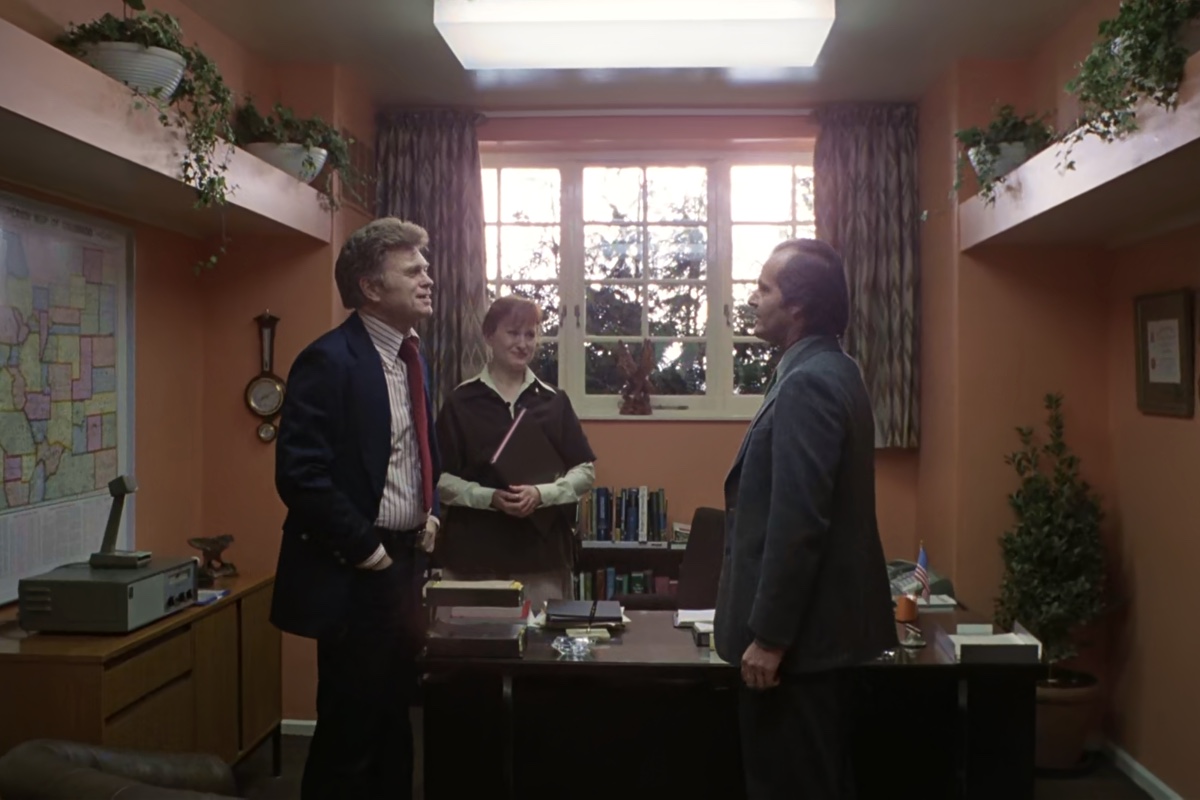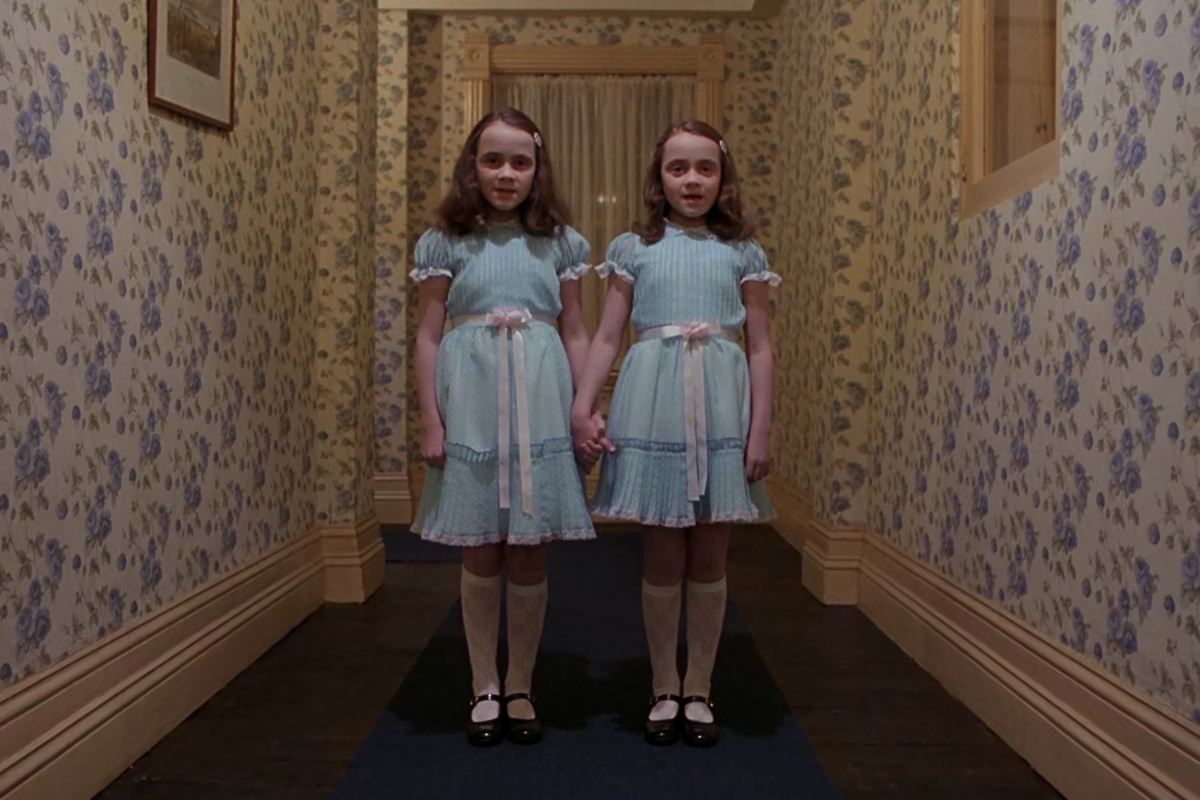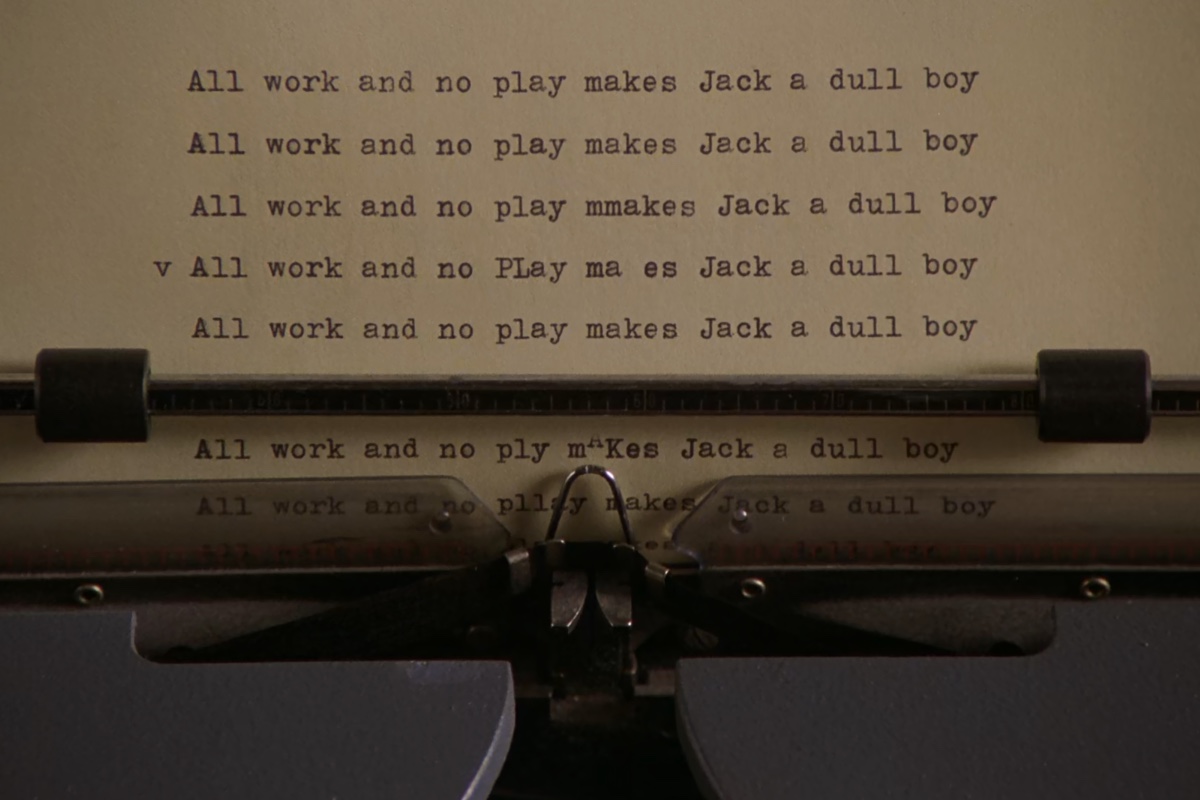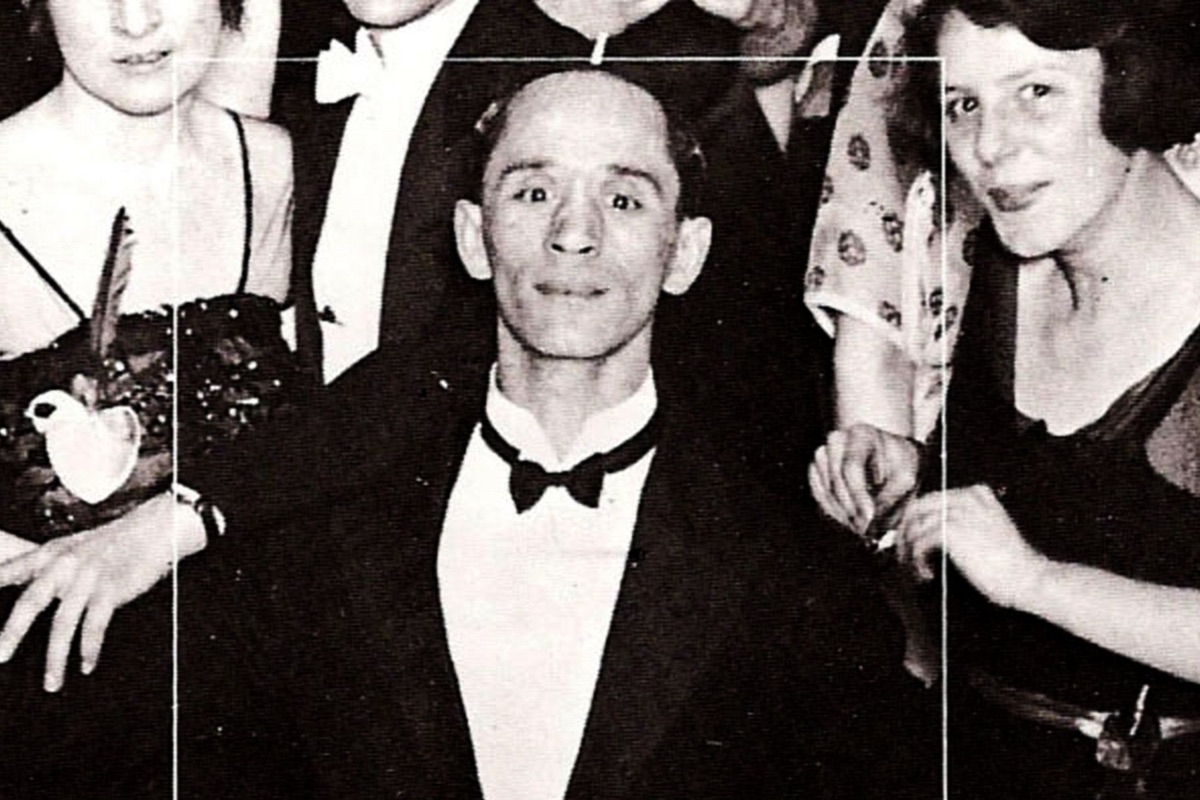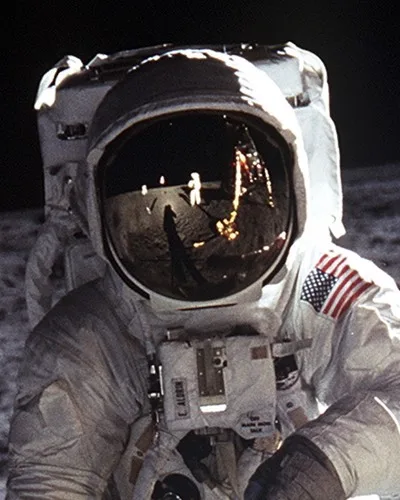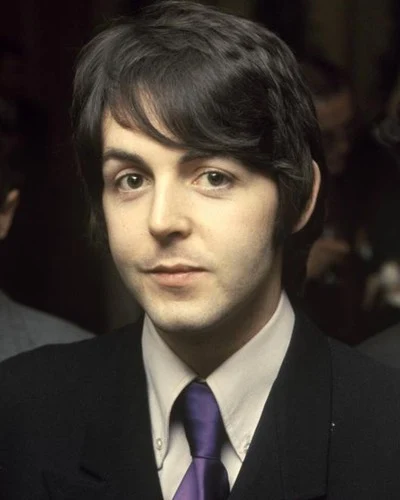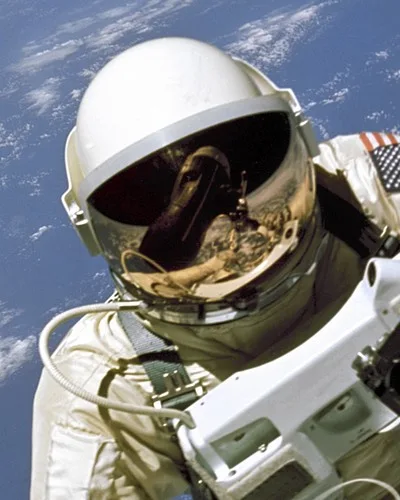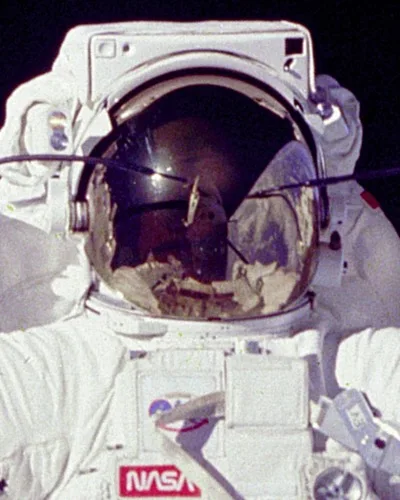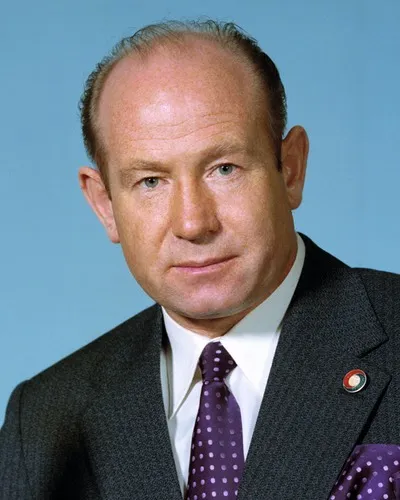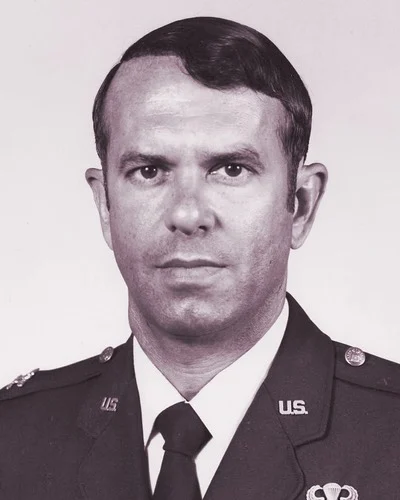If American filmmaker Stanley Kubrick is not the greatest director of all time, as many critics believe, he is certainly one of the most mysterious.
Basing himself in London from the 1960s, the reclusive Kubrick turned out a string of classic films; Dr. Strangelove, 2001: A Space Odyssey, A Clockwork Orange and Eyes Wide Shut, characterised by their dark humour, dense subtexts, and visual innovation. Kubrick's work has exerted both an immense influence on other filmmakers and considerable impact on our wider popular culture.
But as time went on, the gaps between each film grew longer, as the meticulous Kubrick begun to obsess over ever detail of his work. Each film became the culmination of years of preparation, the ostensible story and plots becoming secondary to Kubrick's more esoteric concerns. Perhaps more than any other filmmaker, Kubrick's work is analysed for its hidden meanings.
The director's classic 1968 science fiction epic 2001: A Space Odyssey often appears on film critics all time best lists. It's exploration of mankind's evolution been guided by an alien force revolutionised film special effects. But it was more than just a technical feat, it was a work of art exploring metaphysical concepts using visual metaphors and symbolism.
Of all Kubrick's film, the one that has captured the public imagination more than any other appears to be his simplest. At its release in 1980, many wondered why the great filmmaker had chosen to adapt a straightforward horror novel by Stephen King. The film puzzled critics and King himself hated it for making inexplicable changes to his source material.
That film was the Shining. It is the story of a writer named Jack Torrence, played by Jack Nicholson, who goes mad whilst acting as the winter caretaker at an isolated hotel. Early in the film it is revealed that the previous caretaker also went mad and hacked to death his wife and children. Torrence's young son, blessed with a supernatural power named the Shining, then starts to experience visions of this traumatic event.
Torrence becomes increasingly unhinged by strange supernatural forces that inhabit the hotel and begins to experience his own troubling visions. Eventually, he loses his sanity entirely and attempts to follow in his predecessor's footsteps and murder his wife and children with an axe.
For anyone who has read the book, It's easy to see why it's author was unhappy with the resulting film. It only really plays lip service to the basic plot of the novel, and makes many often minor plot changes for no obvious reason. Most of King's thematic concerns were also discarded, much to his annoyance. Kubrick appeared to be using the shell of the story to serve a more impenetrable and arcane purpose.
As common with many of Kubrick's films, the Shining has undergone a critical reassessment in recent years. Often dismissed in 1980 as a curiously flat and unscary longueur, many critics now regard it as a uniquely unsettling masterpiece of the horror genre.
At the same time, a number of commentators have begun to explore the hidden meanings in the film. The Shining has since become one of the most analysed films of all time, its intricate subtexts attracting a variety of readings. Clearly beneath what remained of Stephen King's book, there was some other narrative, but what exactly was Kubrick trying to tell us?
In 2012, director Rodney Ascher found enough competing interpretations about the true meaning behind the Shining to justify a whole documentary film about them. Room 237 examines five of the most popular theories, allowing their authors to describe them in their own words.
One of the contributors in the film thinks the Shining is really about the massacre of the native Americans, another that it is an extended metaphor about the holocaust. A segment in the film explores the theory that the Shining's hidden meanings are only revealed when it is played backwards and forwards simultaneously.
Room 237 is an entertaining documentary but the arguments set out by the various contributors are often absurd and nebulous. It's easy to read anything into something as ambiguous and dense as the Shining. It is like a mirror that reflects back at you whatever you project at it.
The other problem with most of these theories is there would be no reason for Kubrick to hide them in a horror film about a haunted hotel. If he had wanted to explore the theme of the holocaust or the American Indians, both widely covered in American cinema, there would be no reason to be so cryptic about it.
Perhaps what Kubrick wanted to tell us was something darker and more personal. Something he would want, or need, to hide inside a film that seemed on the surface to be about something else. One contributor to Room 237 follows this reasoning with the most outlandish theory of all; the Shining is actually a hidden confession to Kubrick's involvement with faking the footage of the Apollo moon landings.
Filmmaker Jay Weidner has set out this idea before, in his own full-length documentary named Kubrick's Odyssey in 2011. It is based on a pre-existing conspiracy theory that Kubrick was approached by NASA during the production of 2001 in the mid-60s to help them fake the footage of the Apollo 11 mission as a failsafe in case the astronauts did not make it to the moon.
Weidner believes that Kubrick used the state of the art special effects he developed for 2001 to help NASA fake the footage of the first moon landing and, racked with guilt about the deception, decided to put a secret 'confession' about what he'd done in the Shining.
Weidner's idea has become an extremely popular and widely disseminated conspiracy theory on the internet, inspiring countless youtube videos and websites. But it is really two separate theories, and Weidner's' connecting of them is highly speculative.
We clearly do not have to believe the footage of the Apollo landings were faked, or that Kubrick did the faking, to believe he put references to them in the Shining. There could have been a variety of other motives for doing so. The question is, are the references there at all or is it the overactive imagination of those confounded by Kubrick's byzantine filmmaking style?
That there is at least one reference to Apollo 11 in the Shining is beyond much dispute. It is not in the book and like several other important parts of the film, is an addition Kubrick himself made for reasons not entirely clear.
At the twenty minute mark, Jack Torrance's young son Danny is seen playing on the richly patterned carpet in one of the hotels corridors. Sensing something is drawing him to Room 237, he rises up to reveal he is wearing a jumper with an Apollo 11 rocket knitted into its front.
Stanley Kubrick is widely regarded as one of the greatest film directors of all time and a master of visual metaphor. The analogy between Danny and the launch of the Saturn 5 rocket to the moon was undoubtedly deliberate, but to what effect? Some critics have attempted to fit this curious moment into the film's conventional narrative, but it doesn't seem to serve any obvious purpose in the story.
For proponents of the theory, this sequence was merely the most obvious of a whole string of Apollo references in the Shining, enough for them to be both deliberate and meaningful. This was Kubrick they argue, a man with a track record of using cryptic symbols in his films, from 2001 and a Clockwork Orange right up to his enigmatic final work Eyes Wide Shut. Nothing was put on the screen by chance.
Does the Shining contain a secret message about the Apollo moon landings? And if so, what was the purpose?
Evidence For
Again and Again and Again
By the time Kubrick came to make The Shining in 1978-79, he already had a reputation as an exacting perfectionist. But the shoot of his version of Stephen's King's novel would become notorious for both the treatment of the actors and the vast overrun of its schedule
For what was ostensibly a relatively straightforward horror film, Kubrick spent a staggering 13 months on its production, most of it on the backlot of Elstree studios in England, the home of the vast Overlook hotel set in which most of the films action takes place.
For some reason it seemed particularly important to Kubrick to get this one absolutely right, and the film would become legendary in the movie business for the number of takes used for even the most mundane of scenes. The films lead actors, Shelley Duvall and Jack Nicholson, were often pushed close to breaking point by Kubrick's insistence on filming the same scenes dozens of times.
The director forced his actors to perform one famous moment in the film, the confrontation between an unhinged Jack and a baseball bat wielding Wendy an incredible 127 times, with both of them close to tears at the endless repetition of same lines, often for little or no obvious reason.
Duvall in particular suffered a great deal during the films production, Kubrick’s treatment of the then 29 year old American actress little short of bullying. Duvall suffered from nervous exhaustion throughout the shoot, and became so ill her hair would fall out.
Was Kubrick so unconcerned by the welfare of his actors, or was his obsessive refilming of the same scenes more about capturing important and perhaps fleeting details in the sets, the backgrounds, the props and the framing? Cinematographers have a term for this, mise-en-scène and Kubrick was a master of the art.
Part of this came from his background as photographer. He learnt early how to use framing, scenery and props as storytelling devices, but it was rarely spontaneous. Before each project he would undertake months, sometimes years of painstaking preparation, research and storyboarding before he filmed a single scene.
Kubrick’s planned, but ultimately unmade Napoleon film involved vast amounts of research, location scouting, photographs and storyboards, eventually amounting to hundreds of filing boxes worth of material.
All of the scenes in Eyes Wide Shut set on the streets of Greenwich village were filmed in meticulously recreated sets constructed on the backlot of Pinewood Studios, England, with every lamp post, sidewalk and newspaper vending machine exactly modelled on their real life New York equivalents.
On this last, most mysterious of Kubrick films, he went as far as personally overseeing the design and placement of every set set, prop, and costume, right down to the furniture and even the color of the walls.
With the degree of preparation and control Kubrick had over his work, it’s hard to imagine anything in his films was there by chance. A director like this doesn’t film something 100 or more times unless everything that he his is capturing in the frame of his camera has a purpose.
With most other filmmakers, the kind of strange allusions and references we see to the moon landings in The Shining could easily be dismissed as chance, or simply peripheral dressing that has no real meaning. Knowing what we do about Kubrick, it much harder to make this determination.
But before we take a closer look at The Shining itself, it may be worth a brief review of some of the acknowledged hidden meanings in some of Kubrick's other films by way of comparison.
What Lies Beneath
Few film critics who have studied Stanley Kubrick's work doubt they contain some abstruse subtexts, although exactly what they are remains more contentious. Fewer still can cite a more meticulous or exacting director or one who spent more time and attention on every shot.
Kubrick himself preferred to remain silent about his filmmaking process - "In all things mysterious – never explain", he told the press in an interview to promote The Shining. It is a quote from the great horror author H.P. Lovecraft, whose own work contained its fair share of secrets.
Codes and symbols fascinated the director all his life. According to his personal assistant Anthony Frewin, Kubrick regarded 'The Codebreakers', David Kahn's 1967 book about secret writing and code breaking as one of the most important works of the 20th century.
The Codebreakers is a detailed history of message encryption and decryption and how they have been used by intelligence agencies, criminals and secret societies throughout the ages. Kubrick’s interest in it betrays a lifetime fascination with ciphers and the esoteric, an interest which can help inform our understanding of what is really going on in the filmmaker's work.
"I think clearly there’s a problem with people who are not paying attention with their eyes. They’re listening. And they don’t get much from listening to this film."
Stanley Kubrick
As with the interpretation of any creative work, it is often a fine line between correctly finding meaning and having one's imaginative run away with itself. In 1964, shortly after the release of his film Dr. Strangelove, Kubrick made a rare acknowledgement that somebody had correctly found that line.
Responding to a fan's letter, the director congratulated them on finding some hidden sexual references in the film that seemed to have eluded the professional critics. Had they simply missed the obvious or were they afraid of looking silly for seeing things that were not there?
Perhaps of all the director's films, the most overtly vague and subjective is 2001. At its release in 1968 the film became a favourite of the counterculture generation, who would often attend multiple screenings whilst tripping on LSD. The film chimed with many at the time as a message to mankind about expanding human consciousness, although its many depths are still debated to this day.
As an essentially visual filmmaker, Kubrick always preferred to remain ambiguous in his statements about the meaning of his films. About 2001 he would state to Jerome Agel - “I don’t like to talk about 2001 too much because it’s essentially a non-verbal experience. It attempts to communicate more to the subconscious and to the feelings than it does to the intellect. I think clearly there’s a problem with people who are not paying attention with their eyes. They’re listening. And they don’t get much from listening to this film”.
Was this the same principle Kubrick followed when making The Shining? Was the literal meaning of the story, a caretaker who goes mad looking after a remote hotel, not what his film was about at all? Do we need to look more rather than listen?
1971’s A Clockwork Orange, a film about psychological conditioning and mind-control replete with illuminati and masonic symbolism, got somewhat overshadowed by the tabloid controversy over its violent content. But the film was about much more than violence; Kubrick even hid an all seeing eye atop a pyramid in its poster to hint as much.
The director’s last film was Eyes Wide Shut in 1999. A strange, disturbing work, tackling themes of obsession and identity and featuring a sinister secret society, some believe this was Kubrick's attempt to reveal dark truths about the establishment and their corruption, both sexual and spiritual.
Eyes Wide Shut appears to be a kind of culmination for Kubrick, a film where almost everything lies beneath the surface and nothing appears to be what it seems. The scope of the film warrants an entire separate article in itself, and indeed many books have been written attempting to decipher what the directors last, most mysterious work is really about.
Four days after he completed Eyes Wide Shut, Kubrick died of a massive heart attack, prompting inevitably conspiracy theories that he had been killed by the very sinister forces he seemed to be trying to expose in the film. Whether coincidence or not, Kubrick himself might have appreciated that his death came exactly 666 days before the dawn of the new millenia on January 1st 2000.
The disclaimer here is, of course, not to get too carried away and see things that are not there. John Lennon famous deliberately put meaningless nonsense lyrics into Beatles songs because he enjoyed the incredibly elaborate theories their fans would spin about their ‘hidden’ meaning. It’s hard to imagine Kubrick himself would not have done the same.
But with all this in mind, is there more than meets the eye in Kubrick’s only foray into horror?
The Shining Code
Much to author Stephen King's dismay, Kubrick removed much of what he saw as the central themes his book, retaining just a basic sketch of his story. Why the filmmaker chose King's novel at all for his next project puzzled many critics at the time.
Perhaps if Kubrick wanted to make some kind of obscure statement about the moon landings under the guise of a popular horror film, he simply chose The Shining for the punning name, as in the the Shining Moon. It seems unlikely, but then the cerebral Kubrick always loved puns and wordplay.
To further indulge the idea that Kubrick may have included subtle moon related wordplay in his film, we have the curious case of Billie Gibson. Gibson played the hideous crone who Jack Nicholson's character encounters in the bathroom of the mysterious room 237.
Whoever Billie Gibson was, she was not an actress. She has no other credits on IMDB other than this film. Some accounts have it that she was simply an old lady Kubrick knew, but why she was cast in one of the films most disturbing scenes remains a mystery.
Intriguingly, there is one other Bill Gibson listed on IMDB with only a single credit to his name. That credit is as the director of the official documentary of the Moon landings, 1969s ‘Footprints on the Moon: Apollo 11’.
Gibson is an obscure figure, what little information about him suggests he was a military photographer and filmmaker who worked for NASA in the 1960s. Kubrick, who collaborated closely with the space agency during the making of 2001, may well have known Gibson.
As we shall see later, the scene in The Shining in which the crone appears is the culmination of an unmistakable visual metaphor for the Apollo 11 mission. Could the casting of an unknown non-actress in the part with the same name as the director of ‘Footprints on the Moon’ really have been a coincidence or was it mischief on the part of Kubrick?
The theories presented in the film Room 237 and the work of Jay Weidner range from speculative film criticism to outrageous conspiracy theories. But Weidner's work in particular is of some use to us in search of further moon clues.
The central thesis of his 2011 documentary Kubrick's Odyssey, that Kubrick had helped NASA to fake the moon landing footage and then put a coded confession to this in The Shining, is of course somewhat imaginative. But some of the evidence Weidner presents is nonetheless intriguing, whatever Kubrick's true motives may have been.
Kubrick's Odyssey argues that the father and son characters of Jack and Danny Torrance represent a duality within Kubrick himself. Danny the innocent boy with the unique gifts is Kubrick the creative genius, invited by NASA to take part in the biggest filmmaking challenge in history - faking the moon landing.
Whereas the dishevelled figure of struggling writer Jack and his terrible descent into madness represent the grim, corrupting reality and the toll Kubrick's part in the deception took on him. The directors continued use of mirrors and mirror images in the film might provide, at least on an artistic level, some further affirmation for this interpretation.
The long gaps between projects and his reclusive nature had long prompted rumours that Kubrick had gone mad; had the director hidden from the world because the guilt and paranoia about his role in the deception had become too much to bare? And was the madness of Jack Torrence Kubrick's coded allegory for his torment?
The theory that The Shining as a ‘mirror’ narrative of the Apollo program starts with the scene near the beginning of the film where Jack is interviewed for the caretaker's job at the Overlook hotel by its manager Stuart Ullman, played by Barry Nelson.
Weidner argues that the hotel manager represents John F Kennedy, the ‘manager’ of the USA when, as President in 1961, he initiated the Apollo program. Behind the hotel manager character in this scene is a window sill, representing a stage, and on that stage is a statue of an eagle, ‘Eagle’ being the name of the lunar lander.
Does this scene represent a real event in Kubrick's life, when he was approached by the US government to participate in the filming of faked footage of the Apollo 11 moon landing?
Chronologically, Apollo followed a program named Gemini. In the film, Jack Torrance and his son replace a previous caretaker and his two daughters as the residents of the hotel during its off-season. If Jack and Danny represent Apollo, then it certainly seems apt that a man with twin daughters would represent Gemini, the star sign represented by twins.
That this is more than coincidence is suggested by a change Kubrick made to the book. In the original novel, the previous caretakers daughters are two sisters of different ages, whereas Kubrick consciously cast the parts as identical twins in the film, hiring identical twins Lisa and Louise Burns for the roles.
Jack’s descent into madness is finally revealed in one of the films most famous scenes. After typing away for hours in the hotels vast, cavernous central hallway, Wendy discovers all her husband has written is the phrase “All work and no play make Jack a dull boy” thousands of times.
On Jack’s old fashioned Adler typewriter, the characters of a lowercase l and a 1 are the same, indeed on old typewriters they were often the same key. Hence the phrase equally reads “A11 work and no play make jack a dull boy”. Is this yet another strange reference to the Apollo 11 mission, and even Kubrick's part in it?
In terms of this theory, the films pivotal scene is the extended sequence involving Jack’s young son Danny, which looks very much like a visual allegory of the Apollo mission itself.
Danny, who according to Jay Weidner represents the idealistic side of Kubrick that agreed to fake the moon landings for NASA, can be seen playing on the floor of one of the hotel’s labyrinthine corridors.
From above the gaudy 70s carpeting on the corridor looks, with its hexagonal patterning, a lot like aerial photos of the Saturn V rocket’s launch pad. Agitated by something in one of the hotel’s many empty rooms, Danny slowly rises to his feet, revealing he is wearing a knitted jumper featuring a Saturn V rocket and the words ‘Apollo 11’.
Clearly this is not some incidental costuming detail. Kubrick, a master of visual storytelling, can only be deliberately echoing the takeoff of the Apollo 11 mission in this sequence. The question is why? It doesn't seem to fit into the rest of the story and whilst it's always possible Kubrick did this simply because it looked interesting, that's seems at odds with this most calculating of filmmaker’s style.
After rising to his feet, Danny then proceeds slowly, as if mimicking an astronaut, across the corridor to one of the hotel’s rooms, specifically room 237. If the metaphor is still intact, this room must represent the Moon itself. Could there be some clue in the number 237?
In King's novel, this room is actually room 217, but according to Kubrick's Odyssey this was changed to 237 in the film as Kubrick intended the room to be a hidden reference to the Moon, which is 237,000 miles away from the Earth.
Whilst some critics argue that the Moon is actually 238,900 miles away from the Earth, the allusion is not entirely invalid. Some old science dictionaries and textbooks, which Kubrick may have used during his research for the film, do list the distance as 237,000 miles and Isaac Asimov's important 1972 article ‘The coming decades in space’ also uses the same figure.
What happens to Danny in room 237 is never shown, only the aftermath. Distressed and with his Apollo 11 jumper torn, Danny returns to his parents refusing to speak about what occurred. This certainly seems to fit Weidner's theorised hidden narrative that Danny represents a young Kubrick scarred by his involvement in the moon landing conspiracy.
But even if this is not the case, it's hard to escape the impression Kubrick is trying to tell us something in this sequence, some of the visual parallels are just too strong. Exactly what, of course, is very much open to interpretation.
The whole Apollo takeoff portion of the film concludes with Jack returning to room 237 to investigate exactly what had harmed his son. It is here that and he encounters the old crone played by the mysterious Billie Gibson and his spiral into madness accelerates, ultimately leading him to attempt to murder his wife and Danny.
Other more tenuous visual references to the the Apollo program are perhaps worth briefly mentioning. The large Native American totem murals that hang in the grand hallway of the hotel look decidedly like Saturn V rockets, whether coincidence or not. The film’s chilling sequence where rivers of blood are seem to spill out of the life shafts also bears a strong resemblance to a red hued version of the Saturn V’s fiery launch sequence.
The Shining ends with one final, esoteric moon reference. In the film’s closing shot of an old black and white photograph we see Jack Torrance at the centre of a crowd of party goers in the hotels ballroom. The photograph is, puzzlingly, labelled ‘1921’, and how Jack could be present in a picture taken before he was born is not explained.
Jack’s pose in this photograph echoes the traditional depiction of the medieval demonic idol Baphomet, one hand angled downwards and one upwards. The comparison is no doubt helped by Jacks Nicholsons famously devilish grin.
Baphomet features heavily in masonic symbolism and was said to be worshipped by the Knights Templar. The most common illustration of deity is by 19th century occultist Eliphas Levi and features the goat headed figure pointing directly at the moon.
The Joker
If we accept that there are references to Apollo and the moon landings in The Shining, the obvious question is why?
Speculation that Kubrick was involved in faking the Apollo missions is not new, sceptic Bill Kaysing had suggested the idea as early as the 1970s. As a one of the world's most prominent directors who had recently made a science fiction film with pioneering special effects, he would always look a likely candidate for role.
Did Kubrick simply insert some of this material into The Shining by way of a jokey acknowledgement of this? He may have found the whole idea that he was involved in susch an outlandish undertaking amusing, and wanted to tease conspiracy theorists further by giving them more material to work with.
Another more mundane explanation is that Kubrick, who had already worked closely with NASA during the making of 2001, did indeed work with them on some other entirely un-conspiratorial classified project. The director may have been forced to sign a nondisclosure agreement that forbid him to acknowledge his involvement.
The subtle nods in The Shining were therefore his playful way of breaking that agreement without getting into too much trouble.
That leaves us with one final, sensational alternative. Jay Weidner is right and Stanley Kubrick did indeed film the footage of mankind's greatest achievement on a Hollywood soundstage.
If The Shining is really his encoded confession to this, then it is surely one of the most artful and confounding confessions ever made.
Evidence Against
Lunacy
Critics argue that the elliptical, often surreal nature of Kubrick's work inherently lends itself to the kind of far out analysis given to it in documentaries like Kubrick's Odyssey and Room 237.
Room 237 itself is ample proof of this, containing as it does five radical interpretations of the film that have little to do with its overt horror plot. And this only scratches the surface, dozens of other theories have been posited over the years, on the internet and in books of film criticism.
Several key aspects of the theory expounded by Kubrick's Odyssey have been questioned by sceptics, not least the identification of Room 237 with the moon. The idea that Kubrick changed this from 217 to 237 in order to represent the moon looks to be overreaching in light of Kubrick's own more banal explanation in an interview with Michel Ciment at the time of the films release.
The director was simply asked by the management of the The Timberline Lodge in Oregon, which doubles as the exterior of the Overlook hotel in The Shining, to change the malevolent room in King's novel to the non-existent room 237 in order to avoid putting off superstitious guests.
Of course even if this is true, and we must remember Kubrick also denied that HAL was a sly joke at the expense of computer giant IBM, it wouldn't preclude the possibility it was actually this request that gave him the idea to use 237 as the room number in the first place.
The change from sisters to twins is also cited as a reference to the Apollo precursor program Gemini, but could equally just be because it makes for a more sinister image in a horror film. The creepy look of the twins in the film is actually based on a well known photograph by Diane Arbus that predates both the book and film.
The closing image of Jack Torrance in what appears to be a pose similar to moon deity was also not created especially for the film, Kubrick instead airbrushed Nicholson’s face into an old stock photograph of a group of party revellers from 1923.
Whatever the truth about these references, it’s entirely unclear what any of them really mean. And if there wasn't already an existing conspiracy theory that Stanley Kubrick had helped NASA fake the moon landings it seems unlikely anybody would have made any connections between The Shining and Apollo in the first place.
As such an iconic historical event, and an integral piece of modern American culture, the Apollo program is part of the widely recognised bank of shared imagery many artists and filmmakers dip into, not just Kubrick. It may be the references just felt appropriate to him for a whole variety of artistic and aesthetic reasons and have no deeper meaning.
It's impossible to prove one way or the other what Kubrick really intended The Shining to be about. A personal confession to a dark secret or the tale of a man who goes mad in a haunted hotel, and any number of possibilities in between. The truth, if there is one, went with Kubrick to his grave.
But like any work of art, truth is also something invested into it by the viewer. In a sense all of the many interpretations of The Shining are valid, the secrets of the film ultimately lying in the eye of the beholder.
Does Stanley Kubrick's classic 1980 film The Shining contain a hidden code about the Apollo moon landings? - add your comment below








